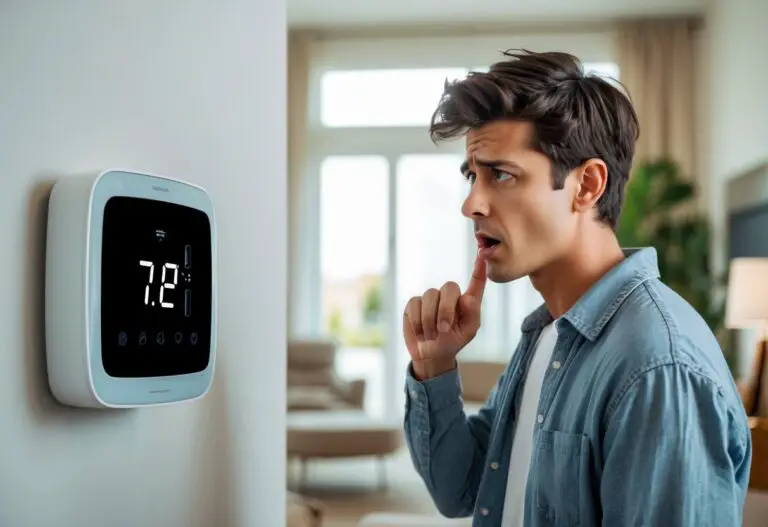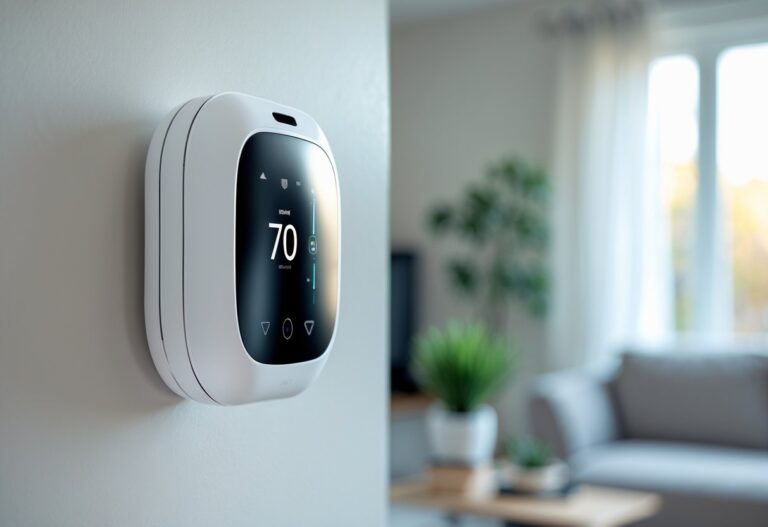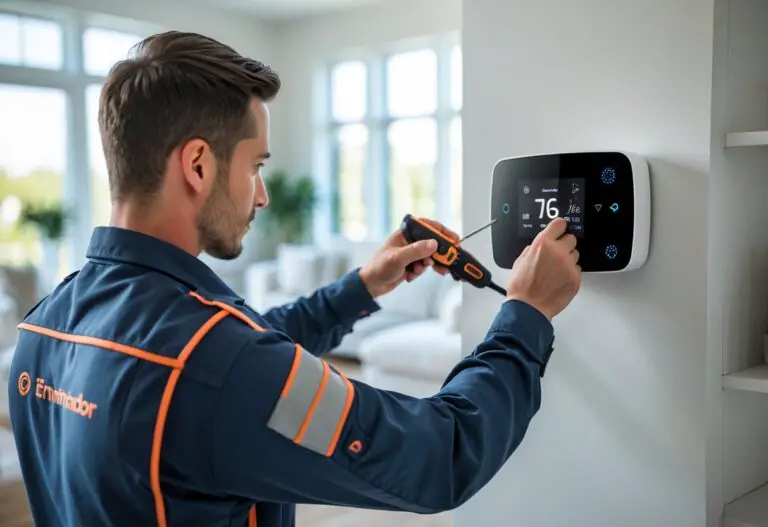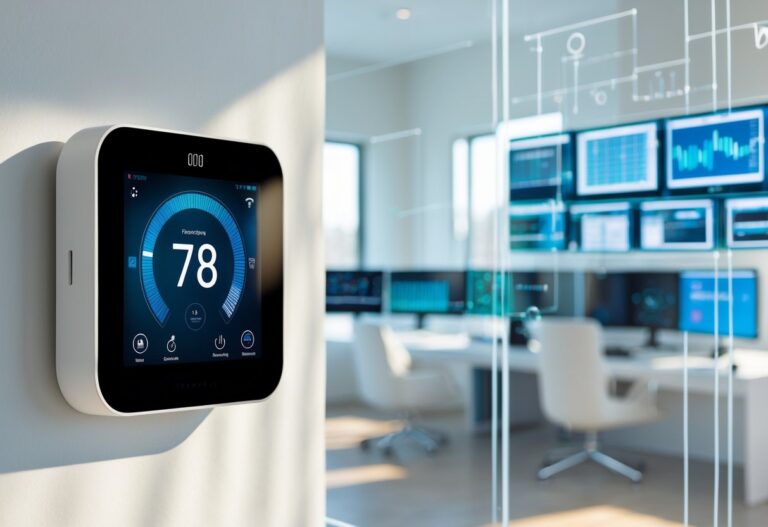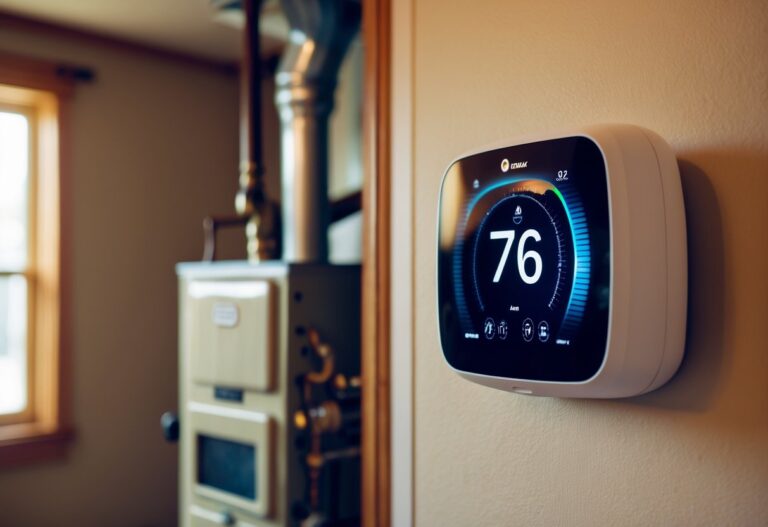Smart thermostats are becoming more popular in homes because they help you save energy and make things more comfortable. You can control the temperature from your phone, set schedules, and even adjust the home climate when you are away. But, as these devices become more common, you might start to wonder about the risks that come with them.
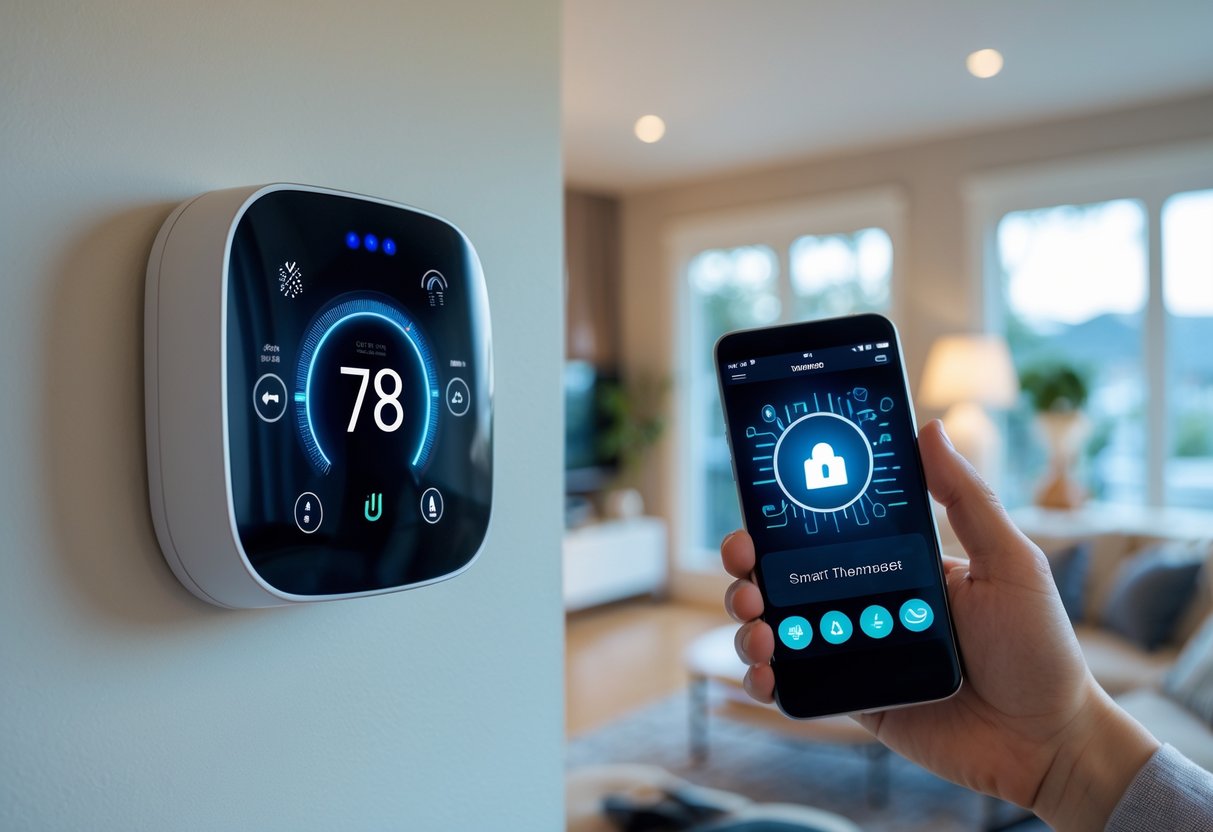
Yes, smart thermostats can be hacked, just like any device that connects to the internet. Hackers may not only change your temperature settings but could also use the thermostat to get into your home network. In some cases, the data about your daily habits and when you are home can be exposed.
Key Takeaways
- Smart thermostats are convenient but can have security risks.
- Hackers can target these devices to access your network or data.
- Protecting your smart thermostat requires strong passwords and regular updates.
How Smart Thermostats Work and Their Key Benefits
Smart thermostats are designed to make controlling your home’s temperature faster, easier, and more effective. These devices use network connectivity, sensors, and modern controls to help you manage comfort, energy use, and even interact with other smart home products.
What Are Smart Thermostats?
A smart thermostat lets you set, change, and schedule temperatures through an app, touchscreen, or even your voice. It connects to your heating and cooling system (HVAC) and monitors your daily schedule and preferences. Using built-in sensors and learning algorithms, a smart thermostat can adjust itself based on whether you are home or away, or even when you are asleep.
Many smart thermostats support features like vacation modes, maintenance reminders, and detailed energy reports. Some models adjust settings automatically by detecting your phone’s location, so your house can start heating or cooling before you arrive.
Key features:
- Smartphone app control
- Touch or voice commands
- Automated scheduling
- Integration with weather data
The goal is to offer more comfort with less manual effort.
Connectivity with Smart Home Devices
Smart thermostats work well with other smart home devices, creating an ecosystem where your devices “talk” to each other. They connect to your home Wi-Fi, which lets you control them remotely from your phone, tablet, or computer.
Most smart thermostats support voice assistants such as Amazon Alexa, Google Assistant, or Apple HomeKit. You can say, “Set the temperature to 72 degrees,” and your system will adjust automatically. Integration with devices like smart lights or smart locks is possible, too. This makes routines like “Goodnight” or “Leaving home” simple with just one command.
Smart thermostats play a big role in the Internet of Things (IoT). They share information with other IoT devices to help automate and manage many parts of your home.
Common integrations:
| Smart Device | Possible Integration |
|---|---|
| Voice assistants | Voice temperature controls |
| Smart plugs/lights | Adjusting climate with lighting scenes |
| Security systems | Away mode when alarm is armed |
Energy Efficiency and Savings
Energy efficiency is a major advantage of smart thermostats. These devices analyze your heating and cooling habits to find ways to use less energy while keeping your home comfortable. The thermostat can lower the temperature when nobody is home and bring it back up before you return.
You can track your daily, weekly, or monthly energy use and see tips on saving more. Many smart thermostats use real-time weather data to adjust heating and cooling. When it’s cooler outside, your system uses less energy by responding to those outdoor changes.
Some models provide reports with charts or graphs, so you can spot patterns and adjust settings for more savings. According to independent studies, many homeowners save on energy bills after installing a smart thermostat, depending on usage and the features turned on.
Ways smart thermostats support energy savings:
- Automatic adjustments based on occupancy
- Adaptive scheduling
- Monitoring weather changes
- Usage and cost reports for smarter choices
These features make it easier to use less energy and lower your costs over time.
Main Security Risks: Can Smart Thermostats Be Hacked?
Smart thermostats are connected to your home network, which exposes them to digital threats. Security risks include unauthorized access and network vulnerabilities, weaknesses in firmware, and flaws in how your device communicates with other systems.
Unauthorized Access and Home Network Vulnerabilities
Hackers may target your smart thermostat to gain unauthorized access. If your device or Wi-Fi network uses weak or default passwords, it becomes much easier for cybercriminals to break in.
Once inside, attackers could change your temperature settings without permission. More worryingly, your thermostat often sits on the same network as other sensitive devices. This allows hackers to move from the thermostat to gain deeper access to things like personal computers or smart cameras in your home.
A compromised thermostat can sometimes be used in attacks called “lateral movement,” letting criminals reach other connected devices or steal sensitive data. Protecting your home network with a strong, unique password and Wi-Fi encryption like WPA2 is essential to lower this risk.
Top ways hackers can exploit home networks:
| Risk | Result |
|---|---|
| Weak router password | Unauthorized network access |
| Default thermostat login | Direct device control by outsiders |
| Unsecured Wi-Fi connection | Data interception and manipulation |
Firmware Exploitation and Outdated Firmware
The software in your smart thermostat, known as firmware, needs regular security updates. Cyber threats can take advantage of outdated firmware that lacks the latest protections.
If you do not apply firmware updates, hackers may exploit known vulnerabilities to install malicious software or even ransomware. In some cases, attacks can render your thermostat inoperable until you take action or pay a fee.
Manufacturers often release updates to close newly discovered gaps. Enabling automatic updates, where possible, and routinely checking for patches are two quick steps to reduce your exposure.
Firmware update tips:
- Enable auto-updates if available
- Check the manufacturer’s website for new releases
- Avoid buying models with no history of clear update support
Communication Protocol Weaknesses
Smart thermostats use Wi-Fi, Zigbee, Z-Wave, or other communication protocols to send data. If these protocols are not secure, attackers could intercept and manipulate your device’s traffic.
For instance, lack of encryption allows hackers to “listen in” and see sensitive data as it travels between your thermostat and the server. If hackers break the protocol, they might take control of your device remotely. This opens your home to several types of cyber threats.
Selecting a thermostat from a reputable brand with strong security standards, and regularly updating all smart home devices, reduces the risks associated with protocol weaknesses.
Strong communication protocols—especially those using modern encryption—offer better protection against these types of attacks.
Common Attack Methods and Real-World Exploits
Smart thermostats can be hacked using several practical and well-known techniques. Attackers focus on weak passwords, insecure data transmissions, and even direct physical access to break into these devices.
Default and Weak Passwords
One of the most common ways hackers access smart thermostats is through default or weak passwords. Many devices are shipped with easy-to-guess login credentials like “admin” or “1234.” If you do not change these defaults, your thermostat is at high risk.
Brute-force attacks are a notable threat. Attackers can use automated tools to try hundreds of password combinations quickly. Strong passwords—including a mix of letters, numbers, and symbols—make it much harder for them to succeed.
Lists of known default passwords for major brands are easily found online. If you use a simple or default password, an attacker may not even need to guess; they can just look it up.
Best practices:
- Always change default credentials immediately after setup.
- Use passwords at least 12 characters long, avoiding words or number patterns.
- Do not reuse passwords you use elsewhere.
Unencrypted and Insecure Communication
Hackers often target the way your thermostat communicates over the internet. If your device sends data without encryption, anyone on your network—or sometimes nearby—can intercept it.
Unsecured communication means unencrypted protocols such as plain HTTP, rather than protected ones like HTTPS or SSL/TLS. When data isn’t encrypted, login details, schedules, and usage patterns can be captured.
Man-in-the-middle (MitM) attacks are a real risk. In a MitM attack, someone intercepts the communication, potentially gaining access to your credentials or even controlling your thermostat.
What to check:
- Make sure your thermostat supports HTTPS and that it’s enabled.
- Check your app or device settings for mentions of SSL or TLS encryption.
- Update firmware often, since manufacturers patch some encryption issues this way.
Physical Tampering and Manual Breaches
Physical access to your smart thermostat can allow someone to bypass digital protections. If a person is able to open your device, they might reset it to factory settings, load malicious firmware, or connect it to an insecure network.
A hacker with physical access could also manipulate internal circuits or memory chips. In some cases, they may retrieve stored login credentials or set a new administrator password.
Locking your device in a secure place or choosing models with tamper-evident features helps reduce this risk. It’s also smart to restrict physical access to anyone you do not fully trust.
Prevention steps:
- Install thermostats in locations that are not easily accessible.
- Consider physical locks for sensitive equipment.
- Check the device regularly for any signs of tampering.
Best Practices for Smart Thermostat Security
Smart thermostats are convenient but can be targets for hackers if not protected. You can reduce risk by using strong authentication, keeping your device updated, and making sure your home network is secure.
Using Strong Passwords and Multi-Factor Authentication
Always create a unique, complex password for your smart thermostat. Avoid default usernames and passwords, since these are often easy for hackers to guess. A strong password uses a mix of uppercase and lowercase letters, numbers, and symbols.
To add another layer of safety, enable multi-factor authentication (MFA) if your thermostat or its app supports it. MFA requires a second form of identification, often a code sent to your phone or email. This makes it much harder for someone to break in, even if they have your password.
Some manufacturers offer security questions or backup codes. Store these securely and don’t share them. Using both a strong password and MFA greatly lowers the chance of unauthorized access.
Keeping Devices Updated with Automatic Updates
Smart thermostat manufacturers often release firmware updates to fix vulnerabilities and improve security. Outdated firmware can leave your device exposed to hacking.
Turn on automatic updates so your device installs the latest patches without you needing to check manually. Most thermostats let you do this from the settings menu in their app. If automatic updates are not available, set a reminder to check for updates every month.
Make sure the companion app on your phone also stays updated, since app vulnerabilities can be another entry point for hackers. Only download apps from trusted sources, such as the Apple App Store or Google Play.
Securing Your Home Network
Your smart thermostat connects to your home Wi-Fi network, so network security is essential. Use WPA2 or WPA3 encryption for your Wi-Fi, and make your password long and hard to guess. Don’t use common words or personal info.
Consider making a separate Wi-Fi network (called a guest network or IoT network) just for your smart devices. This way, if one device is compromised, it’s less likely others will be affected.
Disable remote access or manufacturer backdoors unless you need them. Turn off unused features that may increase risks. Regularly review your router’s settings and update its firmware to reduce home network vulnerabilities that hackers can exploit.
